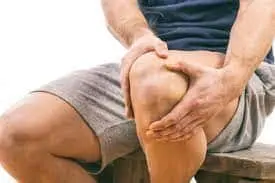How to Reduce Swelling During Pregnancy in Feet?
Introduction
It’s no secret that pregnancy brings its fair share of physical changes and discomforts – and swelling of the feet and ankles is one of the most common. As many as 80% of expectant mothers experience swelling, also known medically as edema, at some point during their pregnancies.
This swelling is often most pronounced toward the end of the day after being on one’s feet all day. While it may just seem like a nuisance symptom, keeping swelling under control is important for more than just comfort.
Severe swelling can be associated with potentially serious complications, so monitoring and managing edema is an important aspect of prenatal care.
In this article, we will take a closer look at what causes swelling during pregnancy, when it may be cause for concern, and the variety of lifestyle changes and treatment options available to help alleviate uncomfortable swelling and edema.
Getting educated on prevention and treatment is key to reducing swelling and avoiding associated health risks during the exciting – but physically demanding – nine months of pregnancy. With some diligent management strategies, it is possible to minimize water retention and keep swelling to a minimum on the long road to delivery day.
Causes of Swelling During Pregnancy
Swelling during pregnancy is caused by a combination of hormonal changes, increased blood volume, and added pressure on the veins in the legs and pelvic region:
- Hormonal Changes – Higher levels of progesterone and estrogen soften tissues and veins, allowing fluid to more easily leak out into the surrounding areas. This leads to swelling or edema.
- Increased Blood Volume – Your blood volume can increase by 30-50% during pregnancy to supply adequate blood and nutrients to your baby. All this extra fluid puts more pressure on blood vessels, causing leakage.
- Pressure on Veins – As your uterus grows larger, it places more pressure on the veins in your pelvis and legs. This slows down blood return from the lower body back to the heart. The baby’s weight and your added pregnancy weight also add more pressure.
- Gravity also plays a role as blood pools in the lower extremities. The slowed vein return, leakage from pressure, and pooling of fluids make swelling/edema in the feet and ankles a very common pregnancy complaint. Staying active, elevating the legs, hydration, and compression stockings can help provide relief.
Symptoms of Swelling
Swelling in the feet and ankles during pregnancy has some clear common symptoms to look out for:
- Swollen feet – This may appear as puffy, “cankles” or sausage-like swelling in the feet and ankles toward the end of the day. Swelling is often more pronounced after long periods of standing or sitting.
- Indentation from socks or jewelry – Pressing into swollen skin with pressure from socks, shoes, or anklets can leave noticeable pits or indentations. The skin may look puffy and distended around ankle bands.
- Tight shoes and clothes – As swelling progresses, you may notice rings, shoes, or clothes feeling tighter than usual. You may need to loosen rings and change them to accommodate footwear.
- Foot pain or tenderness – Significant swelling can sometimes be associated with foot pain, tenderness, throbbing, or stiffness from fluid buildup and inflammation.
Pay attention to any symptoms in one leg over the other, rapid swelling, or swelling paired with headaches, vision issues, or excess weight gain as these can indicate a more serious condition. Monitoring your symptoms day-to-day helps guide treatment.
Lifestyle Changes to Reduce Swelling
While pregnancy swelling is often unavoidable to some degree, there are several lifestyle adjustments you can make to help minimize swelling and edema in the feet and ankles:
- Stay Active with Low-Impact Exercise –
Getting regular, mild exercise can vastly improve blood flow and circulation to reduce pooling in the extremities. Aim for at least 15-30 minutes daily of gentle activities like walking, swimming, prenatal yoga, or cycling. Be sure not to overexert yourself.
- Avoid Excess Standing or Sitting –
Standing motionless or sitting for prolonged periods makes swelling worse. Try to periodically shift positions, move around, stretch, and give yourself opportunities to elevate your feet above hip level. This helps drain fluids pooling in the lower body.
- Elevate Your Legs Often –
Make it a point to elevate your legs for 15-30 minutes, 2-3x a day, using pillows or furniture with your feet above hip level. Lying on your side can also take pressure off leg veins. These position changes help blood flow back toward your heart.
- Stay Hydrated with Non-Salty Fluids –
Drink 8-10 glasses of water daily to stay well-hydrated, which reduces fluid retention. Avoiding excessive salt and sodium reduces water weight gain and edema. Caffeine and alcohol can also contribute to swelling, so monitor intake.
- Try Compression Socks –
Compression stockings or socks boost circulation and gently squeeze built-up fluids back into circulation before they pool in the feet and ankles. They also reduce inflammation. Ask your doctor for pressure recommendations.
Treatment to Reduce Swelling During Pregnancy in Feet
While lifestyle adjustments can help control mild pregnancy swelling, some moms-to-be experience severe, persistent edema that requires medical treatment for relief and to prevent complications. Treatment options may include:
Diuretics – Diuretics are usually the first line of prescription treatment for problematic swelling. These medications help reduce overall fluid volume by making you urinate out extra fluid. Common options are thiazide diuretics or spironolactone.
Topical Creams – Over-the-counter mineral oil creams and some plant-based topicals can encourage circulation and provide soothing relief when gently massaged onto swollen feet. These mineral-rich creams may help temporarily drain excess fluids.
Restrictive Diet – If swelling becomes severe, doctors may recommend strict dietary limits on salt, fat, sugars, and overall calories. This approach reduces fluid retention contributing to swelling. Strict diets should not be started without medical supervision.
Compression Stockings – In some cases, over-the-counter compression stockings are not enough. Doctors can provide higher-grade prescription compression after evaluating your edema. Proper gradient pressure is key for safety and effectiveness.
Elevate Feet Frequently – Even with medical treatments, consistent foot elevation above hip level will provide essential relief of uncomfortable swelling and prevent worsening.
In the most severe cases impacting circulation or kidney function, hospitalization may required for intravenous diuretics, skin treatments, and leg elevation. Always see a doctor for sudden onset swelling, shortness of breath, or excessive weight gain. Tracking swelling daily helps doctors best manage progression.
Prevention from Swelling During Pregnancy
- Exercise regularly. Low-impact activities like walking, swimming, or prenatal yoga improve circulation and help prevent blood and lymph fluid from pooling in your feet and ankles.
- Avoid sitting or standing for long periods. Take regular breaks to move around, stretch, or elevate your feet above your heart. This helps blood and fluid drain back from your lower body.
- Wear supportive stockings and shoes. Compression stockings improve circulation while supportive shoes cushion your feet and minimize swelling.
- Drink plenty of water. Hydration prevents the concentration of sodium in your blood, which can pull fluid from your tissues. Aim for 8-12 glasses per day.
- Reduce sodium intake. Consuming too much salt causes your body to retain more water, worsening swelling. Limit processed foods and add minimal or no salt to home cooking.
- Soak your feet. Warm water can soothe swollen feet and stimulate blood flow. Try adding Epsom salts to bath water to gently draw out excess fluid.
- Sleep on your left side. This takes the pressure off the large vein on your right side as your uterus grows larger. Using pillows prevents you from rolling onto your back.
Prevention is an important first line of defense against problematic pregnancy swelling. Lifestyle adjustments may significantly reduce discomfort and complications. Speak to your healthcare provider about your risks and prevention plan.
Summary
Swelling is a common discomfort during pregnancy, affecting around 80% of expecting mothers. Typically appearing first thing in the morning, this type of edema is caused by increased fluid volumes, hormone changes, and growing uterus pressure on pelvic veins—making swelling management vital.
By midday, pregnant swelling signals itself through puffy feet and ankles, pain, tightened shoes, and lingering indentations from socks. While inevitable to some degree, staying active, elevating legs regularly, proper footwear, hydration, and compression socks can minimize symptoms. Overnight or severe swelling requires additional lifestyle adjustments and possible medical interventions like diuretics.
If swelling hampers circulation or mobility at any point, or presents alongside headaches or visual disturbances, promptly notifying your healthcare provider is crucial. Sudden onset swelling later in pregnancy can occasionally indicate underlying conditions like blood clots or preeclampsia—though not always. Ongoing tracking and symptom vigilance assist medical professionals in administering the appropriate level of treatment.
The good news is that while swelling can be highly uncomfortable, it poses limited risks to mom and baby if properly monitored. Developing an understanding of what causes edema, prevention methods, and treatment options allows pregnant women to navigate these transient fluid changes smoothly. Above all, never hesitate to call your physician for guidance regarding this common nuisance during the magical maternal journey.
FAQs
Q: When does pregnancy swelling usually start?
A: Swelling often starts in the second trimester but intensifies in the third trimester as weight gain and circulation changes progress.
Q: Should I be concerned about mild swelling?
A: Mild swelling without pain or other symptoms is common and not worrisome if it reduces with rest and nighttime sleep.
Q: What compression level is best for pregnancy swelling?
A: Start with 10-15 mmHg gradient compression stockings and increase to 20-30 mmHg as needed per doctor’s recommendation.
Q: What home remedies help reduce swelling?
A: Frequent leg elevation above hip level, hydration, foot soaks, massage, exercise, supportive shoes, topical arnica creams, and Epsom salt soaks can provide relief.
References
Ankle swelling during pregnancy: What helps? (2022, July 28). Mayo Clinic. https://www.mayoclinic.org/healthy-lifestyle/pregnancy-week-by-week/expert-answers/swelling-during-pregnancy/faq-20058467
Swelling in Pregnancy | When it’s Normal and When to Worry. (2021, March 8). Family Health Centers of San Diego. https://www.fhcsd.org/prenatal-care/swelling-in-pregnancy-when-to-worry/
How to Reduce Swelling During Pregnancy: 12 Proven Tips. (2019, July 15). Flo. health – #1 Mobile Product For Women’s Health. https://flo.health/pregnancy/pregnancy-health/pains-and-discomforts/how-to-reduce-swelling-during-pregnancy
Jablonski, N. (2020, March 19). When Pregnancy Swelling Becomes Concerning. Healthline. https://www.healthline.com/health/pregnancy/swelling-in-pregnancy-when-to-worry







